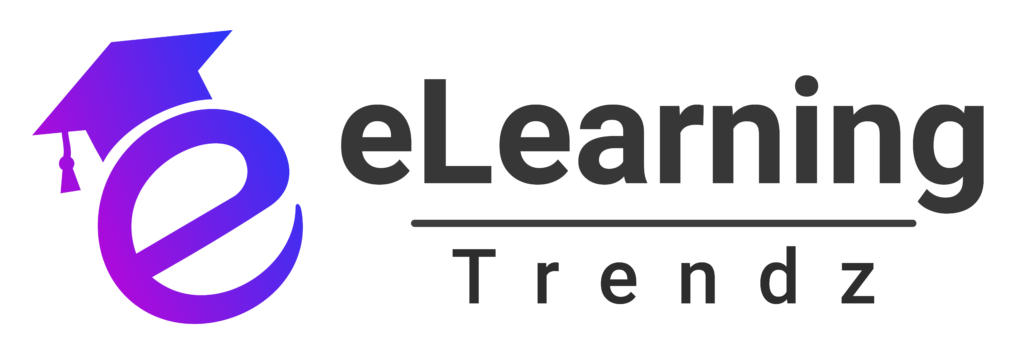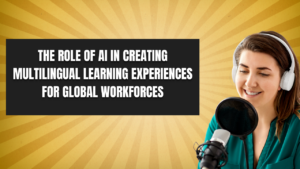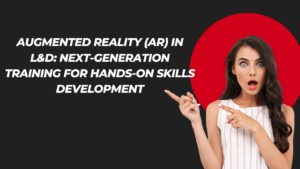As the landscape of Learning and Development (L&D) evolves, so do the features that Learning Management Systems (LMS) offer. By 2025, the need for more personalized, engaging, and data-driven learning experiences will be more pronounced than ever. In fact, according to LinkedIn’s 2023 Workplace Learning Report, 94% of employees say they would stay longer at a company that invests in their learning and development.
As businesses face rapidly changing environments, adopting a future-ready LMS will be key to staying competitive and ensuring employees are always equipped with the skills they need. Here are 8 essential LMS features you’ll need in 2025 to ensure your training programs are cutting-edge, effective, and aligned with the latest trends.
AI-Driven Personalization
Best for: Tailoring Learning Paths to Individual Needs
In 2025, personalization will no longer be a luxury—it will be a necessity. AI-driven personalization is transforming how LMS platforms curate and recommend learning content. By leveraging artificial intelligence, future LMS systems will create customized learning paths based on each learner’s performance, behavior, goals, and preferences. This ensures that employees get content relevant to their roles, learning style, and progress, leading to higher engagement and better results.
Key Benefits:
- Adaptive Learning: Automatically adjusts content difficulty based on learner progress.
- Personalized Recommendations: Suggest courses, resources, and materials tailored to individual learners’ needs.
- Improved Retention: Learners are more likely to stay engaged with content that’s customized for them.
AI-driven personalization increases learner engagement and ensures that each employee gets the most out of their training, maximizing ROI for your learning programs.
Mobile Learning (mLearning)
Best for: Flexibility and Learning on the Go
In 2025, the demand for mobile learning will only increase as more employees expect to access learning materials on their terms, from any location and at any time. Mobile-friendly LMS platforms enable users to access training materials through smartphones and tablets, offering employees the flexibility to learn when it’s convenient for them.
Key Benefits:
- On-the-Go Learning: Employees can access training content during commutes, breaks, or travel.
- Increased Flexibility: Employees no longer have to wait for traditional classroom sessions; they can complete training in small, manageable sessions.
- Engagement: Mobile platforms with push notifications help keep learners on track and engaged.
With remote work becoming increasingly common, mobile learning ensures employees can easily engage with training materials without disrupting their work or personal schedules.
Social and Collaborative Learning Features
Best for: Peer-to-Peer Interaction and Knowledge Sharing
The future of learning is collaborative. By 2025, social learning features will be essential to any LMS. These features enable employees to learn from their peers, share knowledge, and work on collaborative projects. Integrating social tools such as discussion forums, messaging, and shared resources creates a learning environment that feels more connected and engaging.
Key Benefits:
- Peer-to-Peer Learning: Employees can ask questions, share ideas, and collaborate on projects.
- Real-Time Feedback: Learners can provide instant feedback and engage in group discussions, enhancing the learning experience.
- Community Building: Encourages a culture of continuous learning and knowledge-sharing within the organization.
By incorporating social learning into your LMS, you create a collaborative environment where employees not only learn from content but also from each other, leading to better knowledge retention and more meaningful learning experiences.
Integrated Learning Analytics
Best for: Data-Driven Insights and Continuous Improvement
Learning analytics will play an even more pivotal role in 2025, providing L&D teams with deep insights into learner behaviors, content effectiveness, and training outcomes. With integrated learning analytics, LMS platforms will help organizations track learner progress, measure training ROI, and continuously improve training programs based on data.
Key Benefits:
- Progress Tracking: Real-time data on learner performance, engagement, and completion rates.
- Identifying Skill Gaps: Pinpoint areas where learners are struggling and make adjustments to course content.
- Data-Driven Decision Making: Use insights to refine your training strategy and optimize content.
LMS platforms with robust analytics will enable L&D teams to make informed decisions, ensuring that training is always aligned with employee needs and organizational goals.
Microlearning Capabilities
Best for: Efficient, On-Demand Learning
Microlearning is rapidly becoming a top trend in L&D, and by 2025, it will be a core feature in all future-ready LMS. Microlearning delivers content in small, digestible chunks that employees can consume quickly, which is perfect for just-in-time learning and reinforcing knowledge. This method helps improve retention and engagement by offering bite-sized lessons that employees can easily access during their daily routine.
Key Benefits:
- Quick Learning: Short, focused lessons that can be completed in minutes.
- Increased Retention: Small, digestible pieces of information are easier to remember.
- Flexibility: Employees can access microlearning modules on-demand when they need a refresher or to solve a specific problem.
As employees seek to balance work and learning, microlearning enables them to engage with training content without feeling overwhelmed, making it an essential part of your LMS in 2025.
AI-Powered Chatbots for Real-Time Assistance
Best for: Instant Support and Automation
AI-powered chatbots are expected to be a must-have feature in LMS by 2025. These chatbots can assist learners with everything from answering course-related questions to providing real-time feedback and troubleshooting. By integrating AI-driven chatbots into the LMS, organizations can automate repetitive tasks and provide 24/7 employee support, improving the overall learning experience.
Key Benefits:
- Instant Feedback: AI chatbots provide immediate assistance and guidance, reducing learner frustration.
- Automation: Automate routine tasks such as course enrollment, progress tracking, and assessments.
- Scalable Support: Chatbots can handle multiple learners simultaneously, ensuring no one is left without support.
Chatbots will reduce the burden on support staff and provide a more efficient, engaging, and responsive learning experience for employees.
Blended Learning Integration
Best for: Combining In-Person and Online Learning
Blended learning—an approach that combines face-to-face instruction with online learning—is here to stay and will be a key feature of LMS in 2025. Organizations will continue to leverage the flexibility of online learning with the effectiveness of in-person sessions, creating an integrated learning environment that caters to different learning preferences.
Key Benefits:
- Flexibility: Employees can balance learning between online and in-person sessions.
- Variety of Learning Formats: Learners can access a mix of content, including videos, webinars, group discussions, and hands-on activities.
- Enhanced Engagement: In-person learning provides opportunities for live interaction, while online modules allow for independent study.
By 2025, LMS platforms that integrate blended learning features will be essential for delivering comprehensive training that meets the needs of both remote and on-site employees.
Blockchain for Credentialing and Certifications
Best for: Secure and Verifiable Credentials
By 2025, blockchain technology will be crucial for securely managing and verifying credentials, certifications, and achievements. Blockchain allows for tamper-proof records of learner progress, ensuring that certifications are authentic and verifiable. This technology will be particularly useful for industries with stringent regulatory requirements.
Key Benefits:
- Secure Records: Blockchain ensures that learning credentials and certifications are stored securely and can’t be altered.
- Instant Verification: Employers and educational institutions can verify certifications in real-time without relying on third parties.
- Enhanced Trust: Learners and employers can trust the authenticity of certifications, boosting credibility.
As organizations continue to prioritize compliance and security, blockchain will become an essential feature in LMS platforms for verifying achievements and ensuring the integrity of training records.
Conclusion
Advancements in AI, mobile learning, and immersive technologies like VR and AR will shape the LMS landscape in 2025. Organizations can provide a more engaging, effective, and scalable learning experience for their employees by adopting personalized learning, data-driven insights, and AI-powered chatbots. As we move into this future, embracing these future-ready LMS features will ensure that employees are continuously upskilled, businesses remain competitive, and learning becomes an integral part of organizational success.
Ensuring that your LMS evolves with these trends will enhance your L&D strategy and prepare your workforce for the challenges of the future.










